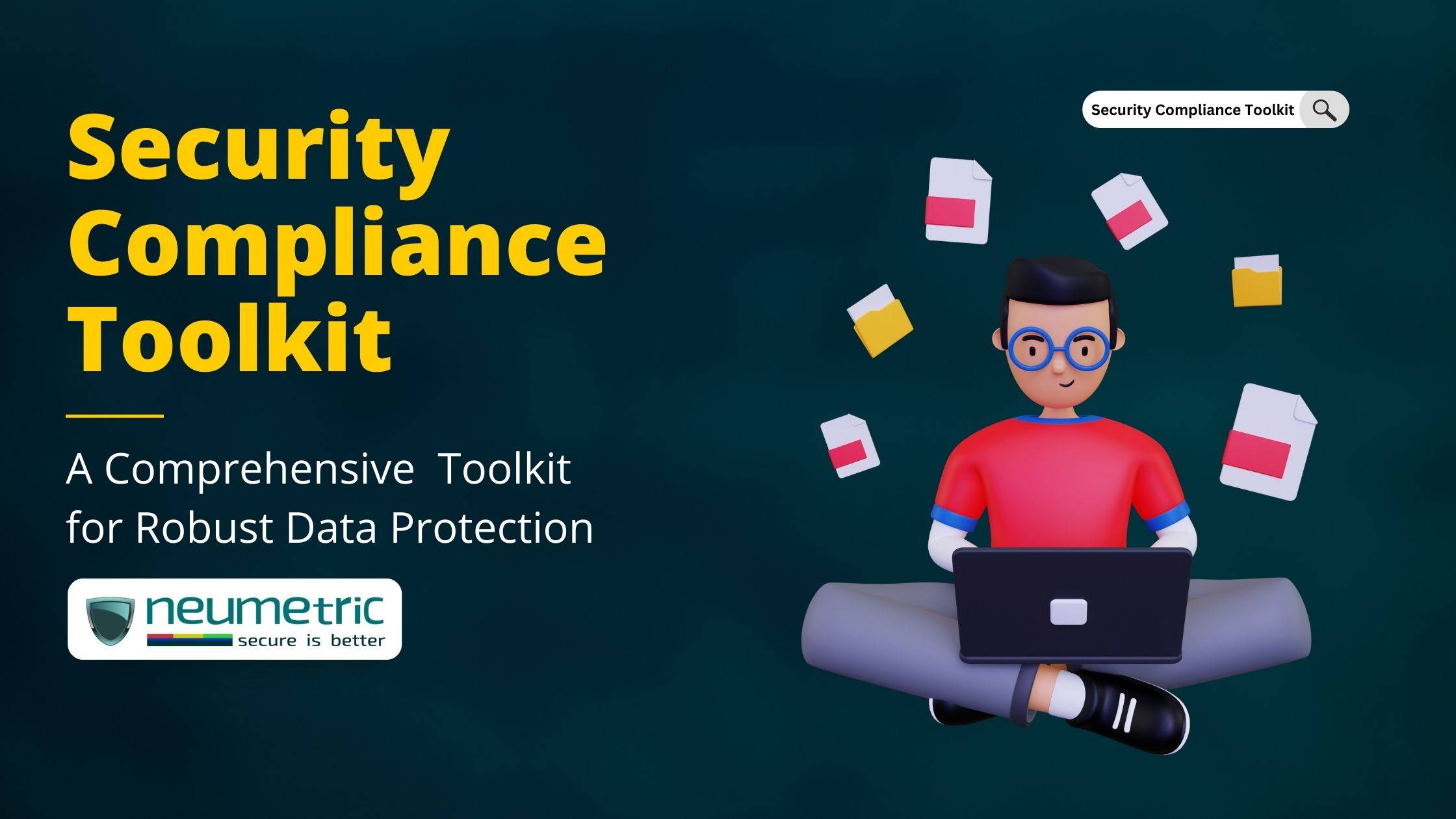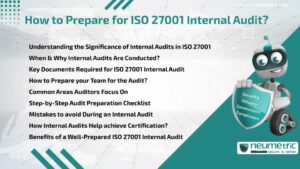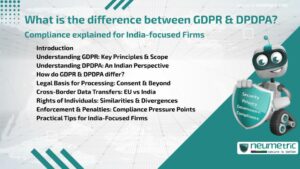Table of Contents
ToggleA Comprehensive Security Compliance Toolkit for Robust Data Protection
Introduction:
Security compliance refers to adhering to a set of regulations, standards & best practices that are designed to ensure the Confidentiality, Integrity & Availability [CIA] of data. Compliance frameworks such as the General Data Protection Regulation [GDPR], Payment Card Industry Data Security Standard [PCI DSS], Health Insurance Portability & Accountability Act [HIPAA] & many others, establish guidelines that organisations must follow to protect sensitive data.
The aim of this Journal is to provide a comprehensive security compliance toolkit that can assist organisations in ensuring robust data protection. This toolkit will include a range of resources, templates & guidelines to help organisations navigate the complexities of security compliance.
Understanding Security Compliance
Security Compliance refers to the adherence & conformity to a set of rules, regulations, standards & best practices that are designed to ensure the protection, confidentiality, integrity & availability of sensitive data within an organisation. The purpose of security compliance is to establish a framework that helps organisations implement robust security measures, mitigate risks & safeguard sensitive information from unauthorised access, breaches or misuse.
Common industry standards & regulations play a vital role in security compliance. For example, the General Data Protection Regulation [GDPR] is a comprehensive data protection regulation enacted by the European Union [EU] to protect the privacy & personal data of EU citizens. It imposes strict requirements on organisations that process or handle personal data, emphasising consent, data subject rights, data breach notifications & privacy by design.
Similarly, the Health Insurance Portability & Accountability Act [HIPAA] is a U.S. regulation that sets standards for the protection of patients’ medical records & personal health information. It applies to healthcare providers, health plans & business associates from the United States of America, focusing on privacy, security & confidentiality of patient data.
The Payment Card Industry Data Security Standard [PCI DSS] is a globally recognized standard that applies to organisations handling payment card data. It ensures the secure processing, transmission & storage of cardholder information, reducing the risk of credit card fraud & data breaches.
Aligning with compliance frameworks is crucial for organisations due to several reasons. First, compliance with industry standards & regulations is often mandated by law. Organisations that fail to comply may face legal consequences, including financial penalties, litigation & regulatory sanctions.
Second, compliance frameworks provide guidelines & best practices to ensure the protection of sensitive data. By aligning with these frameworks, organisations can establish effective security measures, reducing the risk of data breaches, unauthorised access & loss of sensitive information.
Building a Security Compliance Framework
Building a robust Security Compliance Framework is essential for organisations to ensure the protection of sensitive data & meet regulatory requirements. The following steps outline the process of establishing such a framework:
- Assessing regulatory requirements: Begin by identifying the specific regulations & standards applicable to your industry or region. This may include industry-specific regulations like GDPR for data protection or HIPAA for healthcare. Thoroughly understand the compliance obligations outlined in these regulations to ensure a comprehensive understanding of what needs to be achieved.
- Identifying data types & classifications: Determine the types of data your organisation handles & classify them based on sensitivity & potential risks. This can include Personally Identifiable Information [PII], financial data, intellectual property or proprietary information. By understanding the different data classifications, you can implement appropriate controls & allocate resources effectively.
- Mapping compliance requirements to controls & frameworks: Map the Compliance Requirements identified in step one to relevant control frameworks such as NIST or ISO 27001. These frameworks provide established guidelines & best practices for implementing effective security controls. By aligning compliance requirements with these frameworks, you can identify the specific controls & measures that should be implemented to achieve compliance. This mapping process helps streamline compliance efforts & ensures a comprehensive approach to security.
Creating Policies & Procedures
Creating policies & Procedures is a critical step in establishing a comprehensive security compliance program. The following steps outline the process of creating effective policies & procedures:
- Developing an Information Security Policy: Start by creating an Information Security Policy that serves as a high-level document outlining the organisation’s commitment to data protection & security. The Policy should include objectives, scope, roles & responsibilities, the overall approach to managing security risks. It should align with regulatory requirements, industry standards & best practices.
- Establishing clear guidelines & procedures: Develop clear detailed guidelines & procedures for various aspects of security, such as data handling, access control, incident response, encryption, employee responsibilities. These guidelines should provide step-by-step instructions & best practices for employees to follow when handling sensitive data or responding to security incidents.
- Documenting policies & distributing them across the organisation: Ensure that all policies, guidelines, procedures are documented in a clear accessible manner. Use a standardised format that is easy to understand & navigate. Make sure the documents are readily available to all employees through an internal portal, intranet or other means of distribution.
Implementing Technical Controls
- Encryption & data protection mechanisms: Encryption is a critical control that helps safeguard data both at rest & in transit. It involves converting data into an unreadable format that can only be deciphered with the appropriate decryption key. By implementing encryption techniques, such as strong encryption algorithms & secure key management practices, Organisations can protect data from unauthorised access or interception.
- Network security measures: Network Security Measures, including firewalls, Intrusion Detection Systems [IDS], Intrusion Prevention Systems [IPS], play a vital role in safeguarding organisational networks from unauthorized access to malicious activities. Firewalls act as a barrier between internal networks & external threats, controlling network traffic blocking unauthorized access attempts. IDS & IPS help detect responses to network intrusions or suspicious activities, providing real-time alerts & automated prevention mechanisms.
- Vulnerability management & patching processes: Establish a Vulnerability Management Program to identify, assess & remediate vulnerabilities in your systems & applications. Regularly scan & assess your infrastructure for vulnerabilities, prioritise them based on risk, apply necessary patches & updates in a timely manner. This helps protect against known vulnerabilities & reduces the risk of exploitation.
Conducting Risk Assessments & Audits
Conducting risk assessments & Audits are integral components of a robust security compliance program. These activities help Organisations identify vulnerabilities, assess the effectiveness of security controls & ensure compliance with regulatory requirements.
- Performing regular risk assessments: Regular risk assessments are essential for identifying potential vulnerabilities & evaluating the level of risk faced by the organization. Risk assessments involve identifying assets, assessing threats & vulnerabilities & determining the potential impact of security incidents. By conducting risk assessments, Organisations can prioritize their security efforts to allocate resources effectively to mitigate the most critical risks.
- Carrying out Internal & External Audits: Internal & External Audits evaluate the organization’s adherence to security policies, procedures & regulatory requirements. Internal Audits are conducted by internal personnel or an independent Internal Audit team, while External Audits involve third-party Auditors. These Audits help validate the effectiveness of security controls, identify any gaps or non-compliance issues & ensure that the organization is meeting regulatory obligations.
- Establishing remediation plans: Upon identifying vulnerabilities or non-compliance issues through risk assessments or audits, it is crucial to establish remediation plans. These plans outline the steps required to address identified issues, mitigate risks & achieve compliance. Remediation plans may involve implementing additional security controls, updating policies & procedures, conducting employee training or patching vulnerabilities. Assigning responsibility & setting target timelines for remediation helps ensure accountability & timely resolution of identified issues.
Employee Training & Awareness
Employee Training & Awareness play a crucial role in ensuring a strong security compliance program. It is essential to educate employees about security best practices, conduct regular training sessions & reinforce the importance of compliance & its impact on data protection. Employees are often the first line of defense against security threats, making it crucial to educate them about security best practices. Training should cover topics such as password hygiene, phishing awareness, social engineering, physical security & safe data handling practices.
Regular training sessions should be conducted to reinforce security knowledge & address emerging threats. These sessions can be in the form of workshops, webinars or online training modules. Organisations should also consider running awareness campaigns to promote a culture of security. These campaigns may include distributing newsletters, posters or email reminders that highlight security practices, share real-world examples & provide tips for maintaining a secure work environment.
Employees should understand the importance of compliance & the impact it has on data protection. Training sessions should emphasize regulatory requirements specific to the organization’s industry, such as GDPR or HIPAA.
Incident Response & Reporting
Incident response & reporting are critical components of a comprehensive security compliance program. Organisations need to be prepared to effectively respond to security incidents, minimise their impact & prevent future occurrences.
- Developing an Incident Response Plan: An incident response plan is a predefined framework that outlines the organisation’s response procedures in the event of a security incident. It should include steps for incident identification, containment, eradication & recovery. The plan should also define the roles & responsibilities of individuals involved, establish communication channels & outline the escalation process.
- Establishing procedures for incident reporting & escalation: Clear procedures should be established for incident reporting & escalation. Employees should be educated on how to recognize & report security incidents promptly. This includes providing them with specific contact information or a designated reporting system.
- Conducting post-incident analysis & implementing corrective actions: Once a security incident has been resolved, it is crucial to conduct a post-incident analysis. This involves analysing the incident, identifying its root causes & assessing the effectiveness of the incident response process.
Continuous Monitoring & Improvement
Continuous Monitoring & Improvement are crucial for maintaining an effective security compliance program. By implementing security monitoring tools & systems, conducting periodic assessments & audits & adapting the security compliance program to changing regulations, organisations can enhance their security posture.
- Implementing security monitoring tools & systems: Implementing security monitoring tools & systems allows organisations to detect & respond to security threats in real time. These tools can include Intrusion Detection & Prevention Systems [IDPS], Security Information & Event Management [SIEM] solutions, log analysis tools & Endpoint Protection Systems [EPS].
- Conducting periodic assessments & audits: Periodic assessments & audits are essential for measuring the effectiveness of security controls & ensuring compliance with applicable regulations. These assessments can include Vulnerability Assessments [VA], Penetration Testing [PT], security risk assessments & compliance audits.
- Adapting & evolving the security compliance program: Regulations & security threats are constantly evolving, necessitating the need for organisations to adapt & evolve their security compliance programs. This involves staying updated on regulatory changes, industry best practices & emerging security trends.
It is essential to foster a culture of continuous improvement & promote accountability across the organisation. Regular communication, training & awareness initiatives help keep employees informed & engaged in maintaining a strong security compliance program.
Conclusion:
Adhering to industry standards & regulatory requirements is necessary to maintain the trust of customers, protect the organisation’s reputation & avoid legal & financial consequences. A comprehensive security compliance toolkit provides organisations with the necessary resources & strategies to establish & maintain a robust security compliance program.
By implementing the various components of the toolkit, including understanding security compliance, building a security compliance framework, creating policies & procedures, implementing technical controls, conducting risk assessments & audits, providing employee training & awareness, establishing incident response & reporting procedures & continuously monitoring & improving security measures, organisations can strengthen their security posture & ensure compliance with applicable regulations.
FAQs:
What is a security compliance toolkit?
A security compliance toolkit is a collection of resources, frameworks & tools designed to assist organisations in achieving & maintaining compliance with security regulations & standards.
What tools are available in the security compliance toolkit?
The tools available in a security compliance toolkit can include compliance management software, vulnerability scanners, policy templates, risk assessment tools & security monitoring systems.
What are tools for compliance?
Tools for compliance typically refer to software solutions & resources that help organisations meet regulatory requirements, such as compliance management software, risk assessment tools, policy management systems, documentation templates & training materials.
What is SAP security compliance?
SAP security compliance involves implementing measures & practices to ensure that SAP systems meet security regulations & standards, including access controls, user management & ongoing monitoring & auditing.





